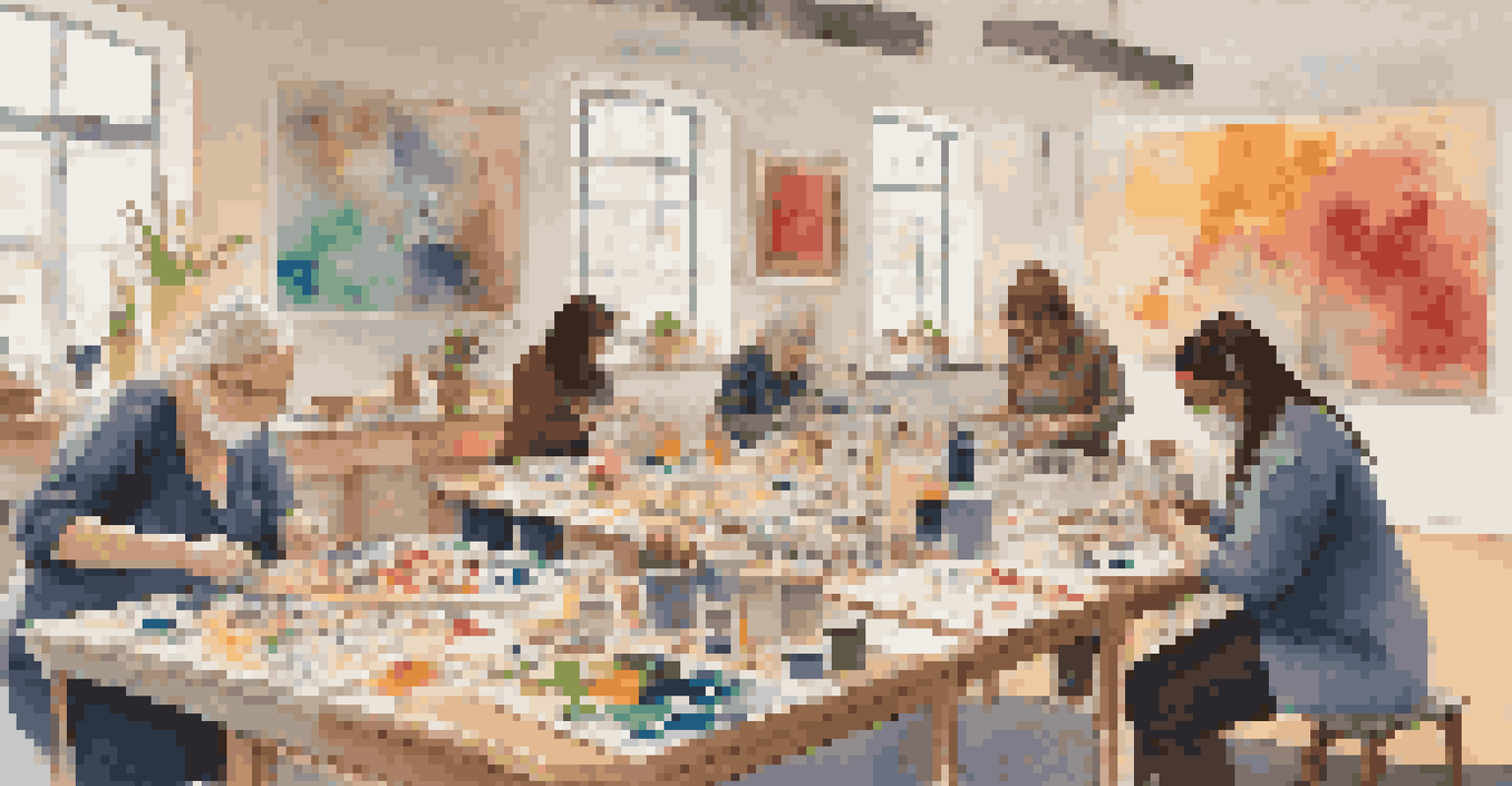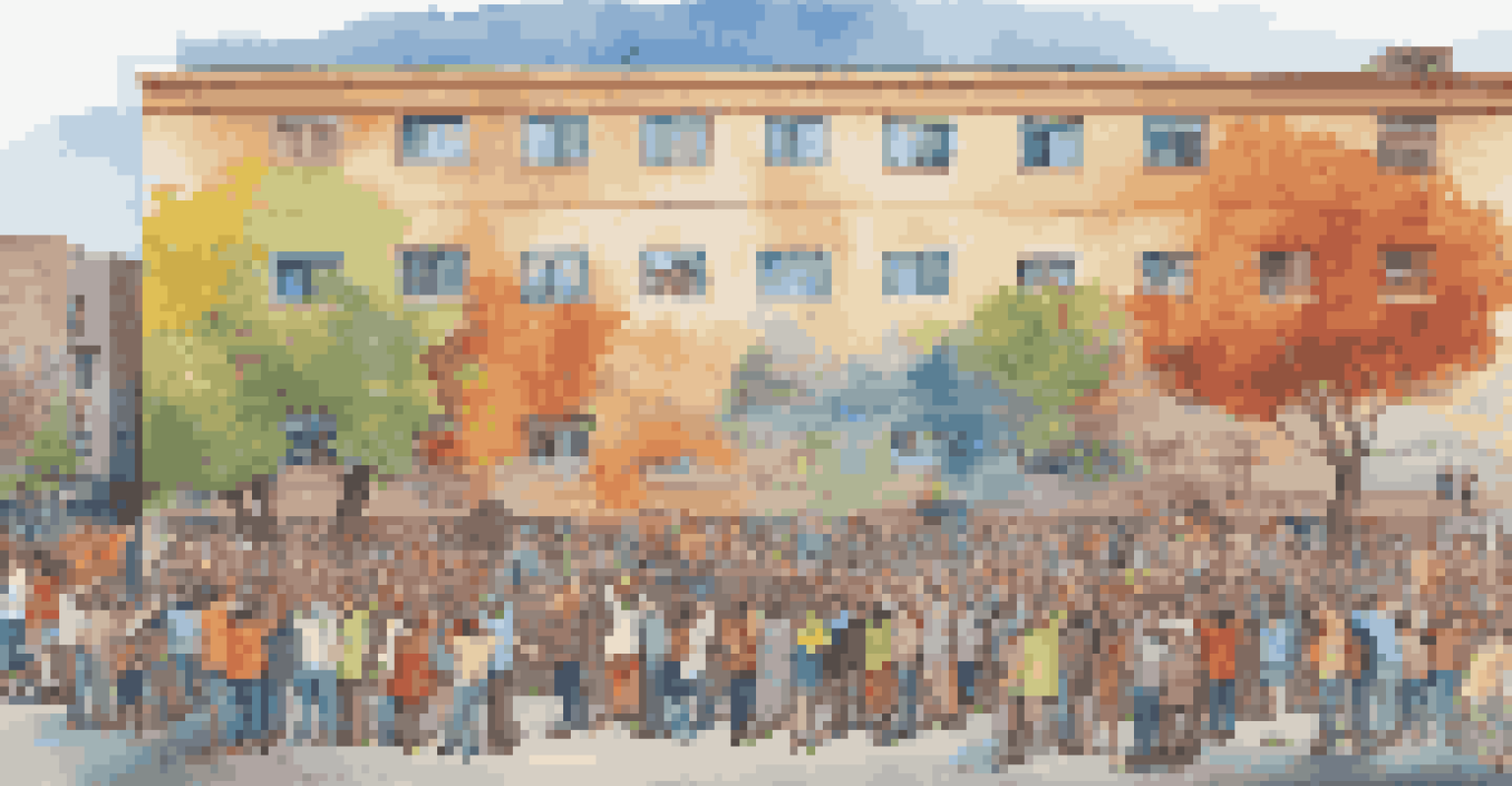Building Resilience: Art Programs for Community Health

Understanding Resilience and Its Importance
Resilience refers to the ability to bounce back from challenges and adapt to adversity. It's not just about surviving tough times; it's about thriving despite them. In communities, resilience can strengthen social bonds and improve overall well-being.
Art is not a mirror to reflect the world, but a hammer with which to shape it.
When individuals possess resilience, they are more equipped to handle stress and setbacks. This is crucial in today’s fast-paced world, where mental health issues are on the rise. By fostering resilience, communities can create a supportive environment that encourages growth and healing.
Art programs play a vital role in building this resilience. They provide a creative outlet for self-expression, allowing individuals to process their emotions and experiences. Through artistic expression, participants can transform pain into something beautiful, fostering a sense of hope and community.
The Role of Art in Enhancing Community Health
Art has long been recognized as a powerful tool for improving mental health. Engaging in creative activities can reduce stress, anxiety, and depression, leading to overall better emotional health. This is particularly important in communities facing social and economic challenges.

Participating in art programs encourages social interaction, which is key to building a supportive network. These connections not only enhance individual well-being but also strengthen community ties. When people come together to create, they share experiences that promote understanding and empathy.
Resilience Boosts Community Well-Being
Building resilience through supportive environments helps individuals and communities thrive despite challenges.
Moreover, art programs can address specific health issues within a community. For example, they can raise awareness about mental health resources or provide coping mechanisms for trauma. By integrating health education with creative expression, communities can tackle important issues in a relatable way.
Examples of Successful Art Programs
Across the globe, various art programs have successfully enhanced community resilience. One notable example is the 'Art for Healing' initiative, which brings together artists and healthcare professionals to facilitate workshops for individuals facing chronic illnesses. Participants create art that reflects their journeys, fostering healing and connection.
Creativity takes courage.
Another inspiring program is 'Creative Aging,' which focuses on seniors and uses art to combat isolation. By engaging older adults in painting, music, and dance, this program not only enhances their mental health but also cultivates a sense of purpose and belonging.
These examples illustrate that art programs can be tailored to meet the unique needs of different communities. Whether it’s through mural projects, theater performances, or music festivals, the possibilities are vast and impactful.
How to Start an Art Program in Your Community
Starting an art program in your community doesn’t have to be daunting. Begin by assessing the interests and needs of your community members. Surveys or informal discussions can help identify what types of art activities would resonate the most, whether it’s painting, writing, or performing.
Once you have a clear idea, seek out local artists or art educators who can lead the sessions. Collaborating with community organizations or schools can also provide additional resources and support. Together, you can create a safe and welcoming environment for everyone to express themselves.
Art Programs Enhance Mental Health
Engaging in creative activities reduces stress and fosters social connections, significantly improving emotional well-being.
Finally, promote your program through local channels, such as social media, community boards, and newsletters. The more people know about it, the more likely they are to participate, ultimately fostering a stronger, more resilient community.
Overcoming Barriers to Participation
While art programs can significantly benefit community health, barriers to participation often exist. Factors such as cost, accessibility, and lack of awareness can prevent individuals from joining. It’s essential to address these challenges to ensure everyone has the opportunity to participate.
One way to overcome financial barriers is to offer free or sliding-scale workshops. Additionally, providing transportation options or hosting events in easily accessible locations can help reach a broader audience. Making art programs inclusive ensures that no one is left out.
Creating awareness is equally important. Using local media, social networks, and community events to spread the word can help demystify the programs. When potential participants see how welcoming and beneficial these programs can be, they are more likely to engage.
Measuring the Impact of Art Programs
To truly understand the effectiveness of art programs, measuring their impact is crucial. This can be done through participant surveys, interviews, and observational studies. Gathering feedback helps organizers identify strengths and areas for improvement, ensuring the program remains relevant and beneficial.
Track changes in participants’ mental health, social connections, and overall community engagement. Metrics such as increased attendance at events, improved self-reported well-being, and heightened community involvement can provide valuable insights.
Successful Art Initiatives Exist Globally
Various art programs worldwide demonstrate the potential of creativity to address community health needs and enhance resilience.
Sharing these results with the community can also encourage more participation. When people see tangible benefits, they are more likely to engage with and support the programs, creating a positive feedback loop that enhances community resilience.
The Future of Art and Community Health
As we move forward, the integration of art into community health initiatives will only grow in importance. With increasing recognition of the connection between creative expression and mental well-being, more communities are likely to invest in art programs. This shift can lead to a healthier, more vibrant society.
Emerging technologies, such as virtual reality and digital art platforms, also present new opportunities for engagement. These innovations can make art more accessible, allowing people to participate regardless of their physical location or mobility.

Ultimately, fostering resilience through art programs can create lasting change. By prioritizing community health and encouraging creative expression, we can build stronger, more resilient communities for future generations.